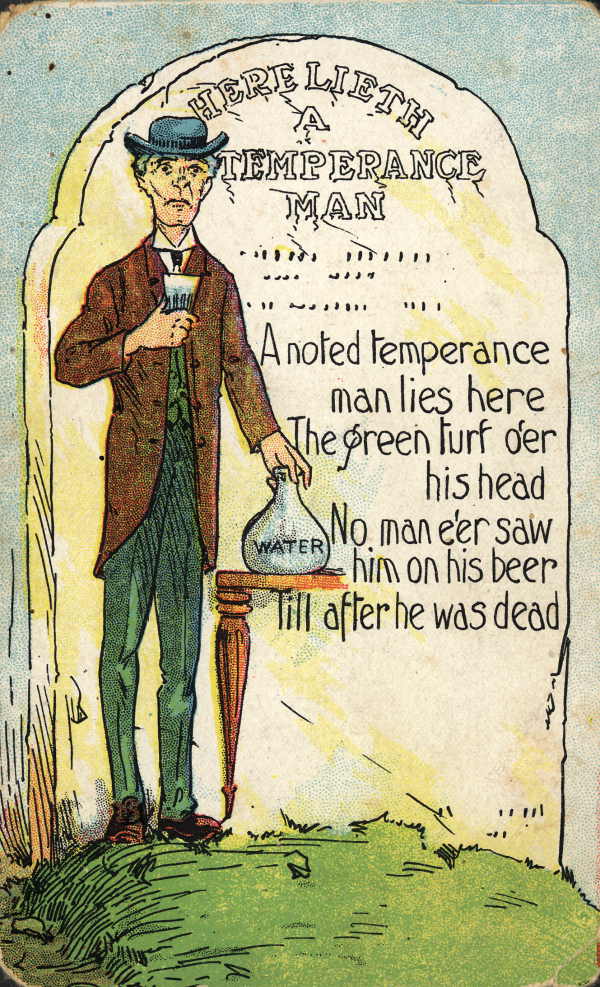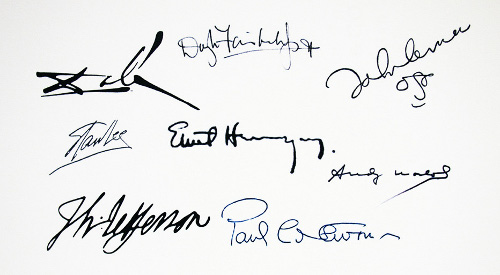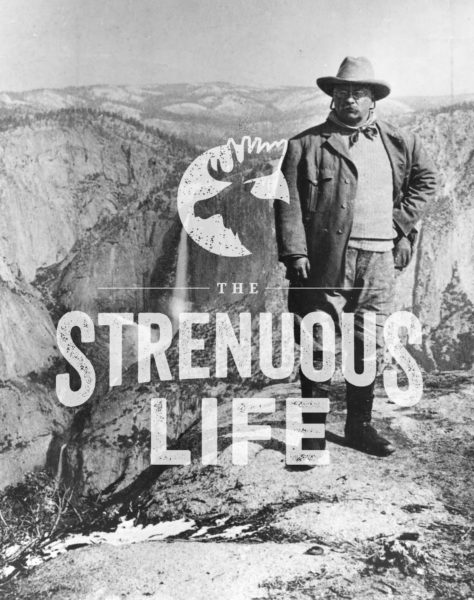
The soundtrack of a movie can really help make a film, deepening the anxiety of suspense, heightening the glory of victory, magnifying the heartache of tragedy, and accenting the protagonist’s change of course. Daniel Day-Lewis’ leap into a waterfall in The Last of the Mohicans wouldn’t be as dramatic without Trevor Jones’ score swelling in the background, nor would Kevin McCallister’s reunion with his mom at the end of Home Alone without John Williams’. The takeoff of jets has never felt so badass, nor physical training so thumotic, as when synchronized with “Danger Zone” and “Gonna Fly Now,” respectively. Whether the soundtrack for a film is comprised of original compositions, or collections of well-known pop songs, the music adds an essential element of texture and emotional salience to the storytelling.
It has always been so. The earliest “silent” films weren’t actually silent at all, but rather accompanied by live music provided by in-theater orchestras and organists. Even before the dawn of modern cinema — way, way before — singing choruses added dramatic depth to the tragedies of the ancient Greeks.
With distinct chapters and turning points, twists and turns, griefs and triumphs, our own individual lives have often been compared to narratives — ones we must author, direct, in memorable, fulfilling ways. In this pursuit, we would be well served to take a cue from other forms of storytelling, by overlaying the unfolding course of our lives with potent musical accompaniment.
To some extent, you probably do this already, turning on angry songs when you’re angry, and sad songs when you’re sad.
But directing a layered, rich, aesthetically interesting, dramatically compelling life story requires employing more intention with your music than that. Below, we’ll unpack how to move beyond typical defaults to create a soundtrack that will truly enhance both the day-to-day rounds and the enduring arc of your life.
How to Create a Soundtrack for Your Life
There are obviously a lot of key differences between a cinematic film and your personal life story. When it comes to creating a soundtrack for the latter, two of the most crucial of these differences are that your life will (hopefully) last a great deal longer than two hours, and that it doesn’t proceed in a strictly linear fashion. A human life rolls on for decades, and moves in seasonal cycles — through winter, spring, summer, and fall, and sets of accompanying rhythms, from one’s daily work schedule, to the repeating calendar of holidays and anniversaries.
While a movie director doesn’t have to worry about a song losing its potency over the course of a single film, you do have to worry about your music collection losing its emotion-magnifying, narrative-enhancing punch over the course of your lifetime. Fortunately, there are ways to stem this loss of salience, so that your personal soundtrack maintains its power your entire life through.
Separate Your Music for Different Times/Moods/Seasons/Tasks
Imagine if a movie kept the same song playing the entire length of the film, or if it repeatedly played a happy song during suspenseful moments, and a sad song during happy ones; the music would lose its significance and its capacity to act as a cue for greater emotional involvement.
And yet in our own lives, we typically play the same songs whether it’s spring or fall, whether we’re working or working out, driving or doing dishes. We often lean into a certain mood of music when we’re in a certain mood ourselves, but when these personal moods are not so pronounced (e.g., coming off a break-up), we don’t tend to make much differentiation in the songs we decide to cue up.
As a result, the potency of life’s soundtrack is greatly degraded.
Many folks suffer from “the horror of the same old thing,” where life seems flat, devoid of texture, endlessly monotonous. And the way we use our music, with unthinking homogeneity, contributes to this meh-defined state.
Part of the cure for the horror of the same old thing is to listen to certain songs during certain times/moods/seasons/tasks, and only during those times/moods/seasons/tasks.
To understand why, and how well, this works, think of Christmas music. Everyone knows that one of the best parts of the holidays are holiday songs. Much of the reason this music is so enjoyable, is that it only comes around once a year, and has a known expiration date. Listening prompts you to feel that you’ve entered a distinct season, you relish it because you know it won’t last long, and there are all kinds of special memories and nostalgic feelings attached to it.
You can get a similar effect by sorting and setting apart all songs for particular, exclusive times. Below we break down how:
Separate Your Music for Different Tasks. Part of the power of music in general, and in having a life soundtrack specifically, is that it heightens your feelings. While heightened feelings are a worthy end in and of itself, allowing you to inhabit a more vivid emotional plane, they’re also a means to an end — feelings are what move you to action.
When you play certain music/songs during certain tasks, your brain starts to associate that music with that task. When you turn it on, it serves as a cue for your mind/body to get primed for the job it knows is ahead. It’s Pavlovian.
When you have a work soundtrack, that you only play at work, as soon as you turn it on, you can feel your mind settling in for the ensuing assignments. Ditto when it comes to your body, and firing up your workout playlist.
This cue effect is greatly lessened if you play the same songs for different tasks. So remember, the overall idea for this, and all of these points, is to play certain artists/albums/songs exclusively during certain times. You never play a song from your workout playlist when you’re just driving in the car, nor turn on a song from your work playlist when you’re still getting ready for the day.
Separate Your Music for Different Moods. Designate certain albums/artists/songs as music you only listen to in certain emotional states/situations, like when you’re stewing after an argument with your significant other, or riding a high from a good time with a friend, or feeling the carefree euphoria of driving with the windows down during a perfect-weather day.
Separate Your Music Into Seasons. It’s also crucial that you divide up your music into playlists exclusive to certain seasons of the year, i.e., there are certain artists/albums/songs that you only listen to during winter, certain artists/albums/songs you only listen to during spring, etc.
Each of nature’s seasons has a distinct mood and atmosphere, and listening to music which accompanies and matches that atmosphere goes a long way towards enhancing it, creating the cyclical rhythm — the combination of the novel and the familiar — that humans find so satisfying, and which works to combat the horror of the same old thing.
If the prospect of not listening to a big chunk of your music collection for ¾ of the year seems too limiting and daunting, it’s an effect that can be accomplished quite effectively, but more moderately, by dividing only your workout music into seasonal playlists. For example, you might hypothetically break things down this way:
- Fall: With the days getting shorter, and darker; the leaves falling, and the air chilling; you naturally start feeling a little more introspective. You experience yearnings for you know not what. During this season, then, your workout playlist might be built around “emo” fare: Dashboard Confessional, Brand New, Snow Patrol.
- Winter: A season that is even more dark and cold than fall, but more stable and predictable. So you might switch to music that’s still got some alternative “darkness,” but is less moody and more straight rock-y — perhaps the Strokes and Jimmy Eat World.
- Spring: A season in flux, with days that swing between the cold and warm, while an energy of renewal hangs in the air. It’s time to turn to music that incorporates both chillier and brighter energies — something like the Bleachers and the Killers.
- Summer: The weather is hot, the sun is shining, and the mood is more carefree. During this season you throw caution to the wind, and crank up all things light, frothy, and pop-y. Guilty pleasures like Taylor Swift and Imagine Dragons.
You don’t have to segregate artists by season like this; bands often have heavier and lighter songs in their collection, and you can distribute them on your seasonal playlists where they best fit. Albums also can have dominant moods, and you can reserve certain ones for certain seasons.
While you want to create exclusive playlists for each season, you don’t need to start/stop them according to the exact date a season starts on the calendar. There are of course transitional times between the seasons; some days, the mood of the season which is expiring remains dominant, while on others, the atmosphere of the coming season entirely breaks through. During these times, it’s fine to toggle between your playlists, playing your winter one on a day that arrives in April but is nonetheless bleak and cold, and your spring one on a day that’s sunny and warm.
The seasons of the year are some of the strongest rhythms of the human experience, but their potential life-enlivening effect is typically stifled by the fact that little else in our lives changes as each one revolves. Separating your music into annual quadrants will not only keep your playlists feeling fresh and give you something to look forward to in their cyclical turning-over, but help revivify the texture-generating power of nature’s seasons.
Separate Your Music for Holidays/Significant Occasions (Other Than Christmas!). While no other holiday besides Christmas has such a large and beloved canon of songs specifically associated with it, that shouldn’t stop you from commemorating other occasions with playlists that simply evoke the feelings which surround them. For example, a Thanksgiving playlist might look something like this. You can also create a playlist just for your wedding anniversary — populated by “your” songs; songs that remind you of falling in love with your spouse; songs that, because you only listen to them once a year, will potently stir up remembrances of why this person is so special to you. You can create playlists for more sorrowful milestones too, like one you only listen to on the anniversary of someone’s death, which is full of songs that cathartically help you remember their life.
Keep Listening to New Music Even as You Get Older
A key to keeping all the various playlists mentioned above well-stocked, while creating an additional “separation” effect with your life’s soundtrack, is to continue to listen to new music as you get older.
One way that music can act as an enhancer of emotions is through the nostalgia factor. When you discover a new album or set of songs, and you listen to those songs again and again over a period of time, the music gets embedded in your memory . . . intertwined with whatever else is concurrently going on in your life — emotions, events, smells, weather, etc.
Those songs will be forever attached to that particular moment in time, so that whenever you listen to them again — whether 5, 10, 20 years down the line — they’ll evoke that period when you first listened to them and they first soaked into your brain.
There are surely albums you can cue up right now that will instantly transport you to another time and place. If you’re like most fully-fledged grown-ups, however, there are a lot more albums and songs that will teleport you back to high school and college, than there are albums and songs capable of taking you back to periods in your (late) twenties, thirties, and forties.
That’s because in a typical lifecycle, an individual will be quite into music — and open to discovering new artists and albums — in their high school and college years, but, from that time forward, mostly just keep listening to their favorite tunes from their adolescence. Their musical tastes get frozen in time.
If you want to keep utilizing music for time-traveling purposes, then you have to keep listening to new stuff even as you age. Check out albums your favorite bands from college have put out since you graduated (lots of folks don’t even do that!); ask your kids for recommendations; use the music discovery feature on streaming apps. Unlike old, familiar music, which has already had its potential memory-attachment quota filled, new music is a blank slate, ready to be hooked into new memories. Fresh discoveries create musical milestones that will allow you to experience the past sometime in the future.
To create a particularly strong musical milestone, wait until you pass through that phase everyone experiences with a great new album where for several weeks you want to listen to it over and over. Once you find yourself playing the album less and less, put it entirely aside for an extended period. Even though new music will only fully attach to the memories created when you initially listen to it, the more and more you play it after that time, the weaker those initial associations become. If you deep-six an album — not listening to it at all for months or even years — when you do uncork this musical time capsule again, the memories from the period when you first heard those songs will come rushing back.
Of course, it’s hard to put a great album in “storage” for a long time; you have to balance how much you want to listen to it, with how strong you want the nostalgic punch to be when you return it to your playlist. It’s a personal decision.
The Score
Life can sometimes feel like just one dang, monotonous thing after another. Not very akin to a good, exciting, dramatic flick. But in creating a soundtrack for our lives, we can imbue them with a little more of those qualities. We can feel more and do more, and experience life in a deeper way.
Lending your life a soundtrack, only listening to certain music at certain times, does require real effort — discipline, delayed gratification, intentionality. In an age where everything — food, porn, entertainment — is on tap 24/7, you can access anything, anytime. If there is any stimulus, including music, that you want to increase the potency of, the satisfaction of, by limiting its availability, it’s on you, the individual, to set boundaries — to decide to deliberately fast from things, take breaks from things, set an idiosyncratic schedule for things.
But in return for sacrificing the ubiquity of your music, you gain the ability to make daily routines and seasonal rotations stand out — to make your life seem less like a meaningless slog, and more like an epic, screen-worthy journey.







